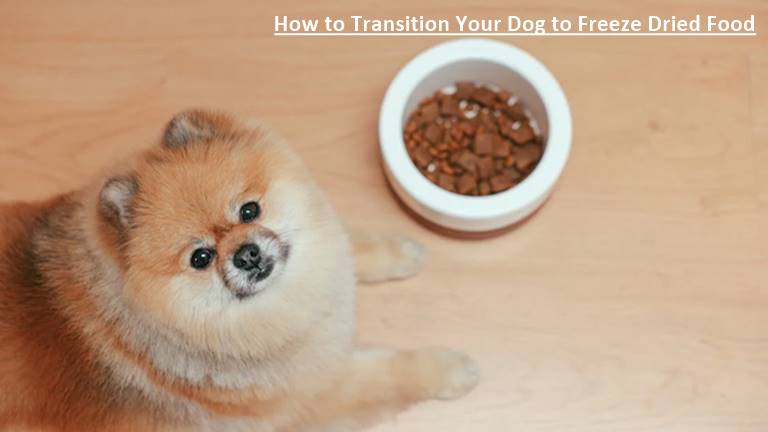Freeze dried dog food has become increasingly popular in recent years. Many dog owners are turning to this type of food because it is convenient, easy to store, and provides a range of benefits for their furry friend. But if you’re new to freeze-dried food, you might be wondering how to transition your dog to this type of diet. Here’s what you need to know.
Why switch to freeze dried food?
Before we dive into the transition process, let’s quickly go over why freeze dried dog food is a great option. Freeze-drying is a process that removes all the moisture from the food while still preserving its nutrients. This means that freeze-dried dog food is shelf-stable, which makes it perfect for storage and travel.
Additionally, freeze-dried food is often made with high-quality ingredients and contains a lot of protein. This is important because dogs are primarily carnivores and need a lot of protein in their diets to stay healthy.
Finally, many dogs find freeze-dried food to be more palatable than traditional kibble. This is because freeze dried food is often made with real meat and has a more natural taste and smell.
How to Transition Your Dog to Freeze Dried Food
Now that you know the benefits of freeze-dried dog food, let’s talk about how to transition your dog to this type of diet.
Step 1: Start slow
The key to a successful transition is to start slow. Begin by adding a small amount of freeze-dried food to your dog’s current food. Start with a ratio of 75% old food to 25% new food. This will give your dog a chance to adjust to the new food without upsetting their stomach.
Step 2: Increase gradually
Over the course of a week or two, gradually increase the amount of freeze-dried food you are feeding your dog. Each day, adjust the ratio to include a little bit more of the new food and a little bit less of the old food. By the end of the week, your dog should be eating a mix of 50% old food and 50% new food.
Step 3: Monitor your dog
As you transition your dog to freeze dried food, it’s important to monitor their behavior and health. Keep an eye out for any signs of upset stomach, such as vomiting or diarrhea. If your dog is experiencing any digestive issues, slow down the transition process and give their stomach a chance to adjust.
Step 4: Make the full switch
Once your dog is comfortably eating a mix of old and new food, it’s time to make the full switch to freeze-dried food. Start by feeding your dog a meal of only freeze-dried food. If they handle this meal well, you can continue feeding them freeze-dried food exclusively.
Step 5: Adjust portion sizes
As you switch to freeze-dried food, you may need to adjust the portion sizes you are feeding your dog. Freeze-dried food is often more calorie-dense than traditional kibble, so you may need to feed your dog less food overall. Consult with your vet to determine the appropriate portion sizes for your dog based on their age, weight, and activity level.
Final thoughts
Transitioning your dog to freeze dried food can be a smooth process if you take it slow and monitor your dog’s behavior. Remember to start with a small amount of new food and gradually increase the amount over time. And don’t forget to adjust your dog’s portion sizes as you make the switch. With a little patience and care, your dog will be happily enjoying their new freeze-dried diet in no time.


